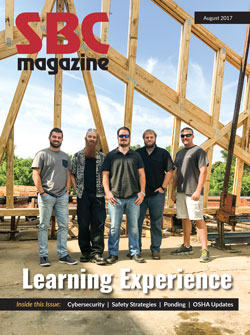Guard Your Back (and your extremities)
Guard Your Back (and your extremities)
In June, I met with career civil servants in the Occupational Safety & Health Administration (OSHA) offices. The group was led by the director of the General Industry and Agricultural Enforcement Department, Art Buchanan, who has now served under five administrations. He had a very important message for the component manufacturing (CM) industry: OSHA is looking very closely at machine safeguards and employees’ personal protective equipment (PPE). Why? Buchanan shared three main reasons behind OSHA’s current level of scrutiny.
Reported Injuries
Since January 1, 2015, OSHA has required employers to report severe, work-related injuries, including amputations, within 24 hours. Buchanan reviewed the amputations reported by the CM industry since then, and he noted a vast majority of them were fingers and hands. Based on the frequency of these incidents in our industry, this is an area that raises a red flag for OSHA inspectors.
Emphasis Program
OSHA’s National Emphasis Program on Amputations uses data collected from injury reports to target industries and locations for inspection. An update to the program in 2015 noted that the rate of amputations in the manufacturing sector was more than double the rate in all other industries. In facilities that operate equipment likely to cause amputations, OSHA inspectors are instructed to conduct a thorough evaluation of each employee’s exposure to the risk of amputation.
Citation History
Given the focus on the risk of amputation, it isn’t surprising that machine guarding has been on OSHA’s top ten list of safety violations in 2015 and 2016. Buchanan said he expects OSHA inspectors will spend a fair amount of time evaluating the machine guarding on any piece of equipment that could cause an amputation. Inspectors are also likely to pay close attention to the PPE worn by employees who work in the vicinity of that equipment.
President Trump has yet to nominate someone to head up OSHA. While it is uncertain what a new director will prioritize, Buchanan believes the focus on machine guarding and amputations will not change. With that in mind, several SBCA members took advantage of their peers’ expertise at the most recent board meeting and shared their experiences with OSHA and best practices.
Bottom Line
If you haven’t scrutinized the guarding on all your machinery lately (even equipment you aren’t currently using), now is the time to do it. Another good step is to register for BCMC, attend the SBCA board meeting on October 27, and join the conversation on how component manufacturers are addressing this issue. What you learn could save you from some hefty fines down the road.

